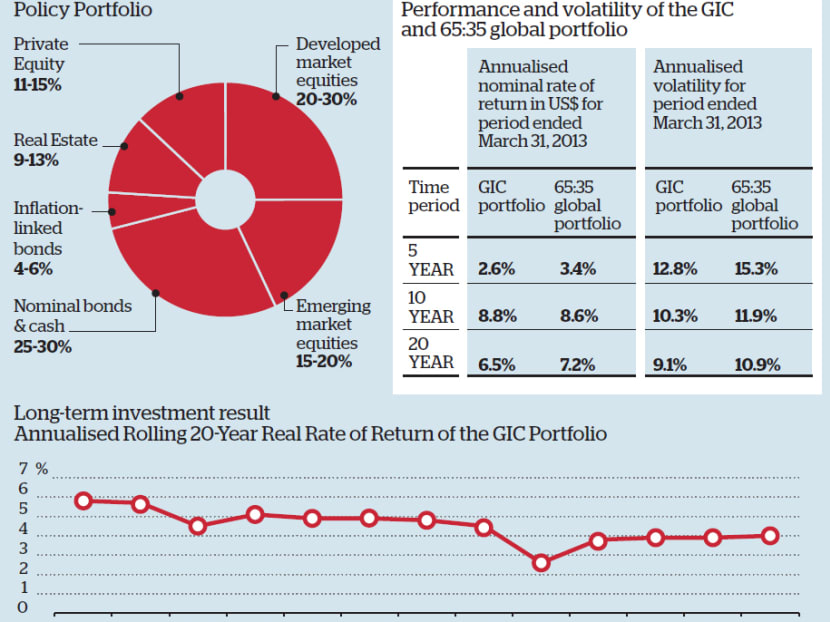GIC changes investment framework for greater flexibility
SINGAPORE — Government investment arm GIC, which reported “steady returns” in its latest annual report, is implementing a new investment approach which will give it flexibility to focus on investments that may be riskier in the short term but would generate returns in the long term.
SINGAPORE — Government investment arm GIC, which reported “steady returns” in its latest annual report, is implementing a new investment approach which will give it flexibility to focus on investments that may be riskier in the short term but would generate returns in the long term.
The move comes after a review last year, its second major review after the first in 2003, when the Government decided it could accept higher risk and made a larger allocation to public equities.
According to its annual report for the financial year ending March 31, released to the public today, GIC’s 20-year annualised rate of return for its portfolio was 4 per cent after taking into account inflation, up from 3.9 per cent in the previous year.
The new approach will see its portfolio structured under three drivers — in particular, a Policy Portfolio and an Active Portfolio — to keep pace with the changing environment in the wake of the global financial crisis.
The Policy Portfolio, which remains the “central component” of its investment framework, will consist of six core asset classes, simplified from 13 classes.
The Active Portfolio is “designed to beat the Policy Portfolio via skill-based strategies”, explained GIC Chief Economist Leslie Teo at a media briefing yesterday.
It allows GIC to “deviate” from the Policy Portfolio, subject to two conditions. “We must do better than the Policy Portfolio because we are meant to add value, by active/alpha skills, and we must not exceed the risk budget set by the (GIC) board,” Dr Teo said.
“It’s not carte blanche, we do it under constraints. In addition, there is further oversight by the Investment Board.”
Elaborated GIC Chief Risk Officer Chia Tai Tee: “Let’s say … for equities, we have a fund manager who says, ‘I can do better than the broad market index, I can select stocks and add value.’ So what we do is, we take a slice from the Policy Portfolio’s equity allocation for him to manage. So they are still managing equities, and so the Policy Portfolio remains unchanged but now, this part of the portfolio is being managed differently ... The latter is what we call the Active Portfolio.”
GIC said the Active Portfolio is controlled by an “explicit risk budget” and overseen by a separate Investment Board, which aims to ensure the government investment arm does not take undue risk. Recommendations on investments are based on analysis and stress-tested to ensure their compliance with risk parameters.
In addition, GIC will peg its risk tolerance level to a Reference Portfolio of 65 per cent global equities and 35 per cent global bonds.
CIMB Group economist Song Seng Wun said the approach reflects GIC’s growing confidence in its experience. “Now that they have the experience, they are willing to do more to increase returns rather than being conservative, and they have generated quite respectable returns,” he said.
Given the interest in how the Government manages Singapore’s reserves, GIC’s move to explain its investment approach is “about accountability in the current political landscape”, he added.
“They are being open about their approach and how they are investing within acceptable risk,” he said.
GIC’s 10-year nominal rate of return was 8.8 per cent and the five-year rate was 2.6 per cent, compared to 7.6 per cent and 3.4 per cent respectively in the previous year.
In the annual report, it said its performance over five years — which was weaker compared to the global figure of 3.4 per cent — was affected by “the weaker performance of alternative asset classes like real estate and infrastructure”, which were slower to recover after the 2008/09 financial crisis.
“However, while an investment portfolio that includes such assets will often underperform in the short term, it is expected to pay off in the long term. This has indeed been GIC’s experience since it increased its allocation to real estate and other alternatives a decade ago,” the report said.







